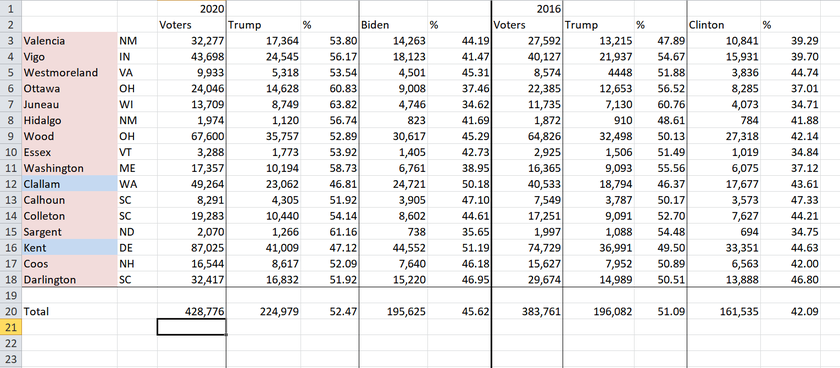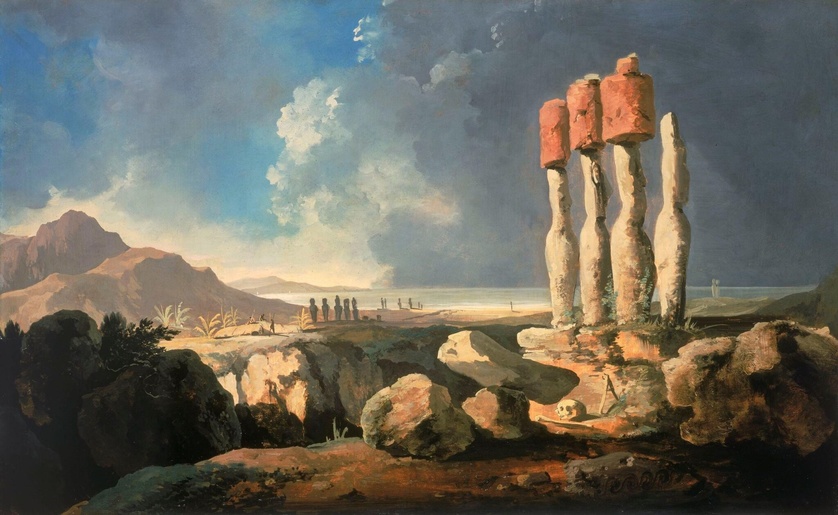
The main post about Easter Island is here (HH3. The Easter Island Moai Statues: Fake?): https://debunked.locals.com/post/4074788/hh3-the-easter-island-moai-statues-fake
The official history of the First European Expeditions to Easter Island goes like so:
- 🇳🇱 1722 April: Dutch expedition led by Jacob Roggeveen arrived on 5th of April 1722 which was Easter Sunday and they named the island "Easter Island".
https://www.easterisland.travel/easter-island-facts-and-info/history/ship-logs-and-journals/jacob-roggeveen-1722/ - 🇪🇸 1770 November: Spanish expedition from Peru led by Don Felipe Gonzalez de Ahedo visited the island and then another 3 or 4 Spanish expeditions. Spanish people named the island San Carlos, explored extensively, created a detailed map with coordinates, declared the island a Spanish territory and signed a treaty with the locals (in Spanish).
- 🇬🇧 1774 March: British expedition led by James Cook lands on the island.
- 🇫🇷 1786 April: French expedition led by Laperouse lands on the island.
https://www.christies.com/en/lot/lot-6179978
https://en.wikipedia.org/wiki/Jean-Fran%C3%A7ois_de_Galaup,_comte_de_Lap%C3%A9rouse
What's wrong with the list above?
- The expedition journal by Jacob Roggeveen was found and published only in 1838 more than 100 years after the expedition to the Pacific.
- The Spanish were apparently unaware that the island already had a name (Easter Island) as they named the island San Carlos.
- James Cook visited the island also around Easter in 1774 (like Roggeveen).
- James Cook in his journal published in late 1770s refers to Roggeveen journal although Roggeveen journal was published much later (1838). https://www.easterisland.travel/easter-island-facts-and-info/history/ship-logs-and-journals/james-cook-1774/
The island was of great strategic significance in the Pacific during the 18th and 19th centuries, before the Panama Canal was built. World powers tried to legally justify capturing it.
What likely happened?
- The Spanish expedition was the first to discover the island in 1770. They named the island San Carlos. The Spanish brought people (natives from the Pacific islands and/or Peru) populated the island and declared it Spanish territory.
- James Cook arrived in 1774 and named the island Easter Island. Since James Cook in his journal refers to Roggeveen's journal (which was published much later) - the James Cook's journal was most likely edited.
- Jacob Roggeveen's journal in the part describing Easter Island was fabricated by the British to discredit the Spanish priority of the discovery. James Cook's journal was edited accordingly as if he knew about the Jacob Roggeveen Easter Island encounter 50 years prior.
While Jacob Roggeveen's journal was published in 1838 there was a book by a soldier in his expedition - Karl Behrens - who describes the visit to Easter Island in 1722. Karl Behrens was 20 at the time of the expedition. The story was published in 1737 and then republished in 1923.
Karl Behrens 1737 edition differs from the 1923 edition by a lot.
https://evols.library.manoa.hawaii.edu/items/f2d70dc5-5aba-4c69-bbd6-006564fa793b
Red flag: Karl Behrens in his story accurately lists the Easter Island's latitude and longitude which was impossible to measure accurately in 1737 (and in 1722) with contemporary tools.
Most probably Karl Behrens story was written much later and then backdated.
The Bellwether Counties argument is frequently cited on Twitter as evidence of an anomaly in the 2020 elections. In 2020, Trump won the popular vote in bellwether counties but lost the election, whereas in 2016, he won both the popular vote in these counties and the election.
The argument states: there are 15-20 bellwether counties, and the candidate who wins the popular vote in these counties will win the General Election.
This concept is flawed since the winner of the General Elections is not decided by the popular vote but by the Electoral College.
Interestingly, there is only one county in the United States that has consistently voted for the winner of the presidential election since 1980: Clallam County, WA.
I have identified 16 bellwether counties that have allegedly predicted the winner. Among them are three counties in South Carolina (Calhoun, Colleton, and Darlington), two in Ohio (Ottawa and Wood), and two in New Mexico (Valencia and Hidalgo).
What do bellwether counties predict, and what do they ...

People think that the Wikipedia is not a reliable source because anyone can edit any article.
📣 Actually, Wikipedia is an excellent source for information. However, it is important to learn how to use it effectively. Here are a couple of examples of how to dig into a Wikipedia article:
- You can check the Wikipedia article in other languages and cross-check the information using Google Translate. The information on the same subject may vary significantly depending on the language in which it is written.
- You can go through the history of Wikipedia article edits and compare the information. You may discover that some essential information was removed by an editor.
I plan WIKI to be a series of articles on the Debunked, where debunking can be done solely using Wikipedia.
Russian Collusion was an alleged interference between the Trump campaign and Russia to interfere in 2016 elections. The Mueller report "did not establish that members of the Trump campaign conspired or coordinated with the Russian government in its ...
On September 26, 1983, Stanislav Petrov, a duty officer who was stationed in the nuclear early-warning system of the Soviet Union saw a big RED BOLD message all over the screen - 5 missiles launched from bases in the United States.
Petrov saved the world by not reporting them to his superiors, and instead dismissed them as a false alarm. This was a breach of his instructions, a dereliction of duty. The safe thing to do would have been to pass the responsibility on, to refer up.
https://en.wikipedia.org/wiki/Stanislav_Petrov
https://www.bbc.com/news/world-europe-24280831
After the collapse of the Soviet Union, the story did get into the press. Mr Petrov received several international awards. But he does not think of himself as a hero 😆
"That was my job", he says. "But they were lucky it was me on shift that night."
📣 The story has all attributes of a classic hoax: only one source, no witnesses, unnecessary visual details that make the story sound more trustworthy.
🧵 Context 1: ...





















